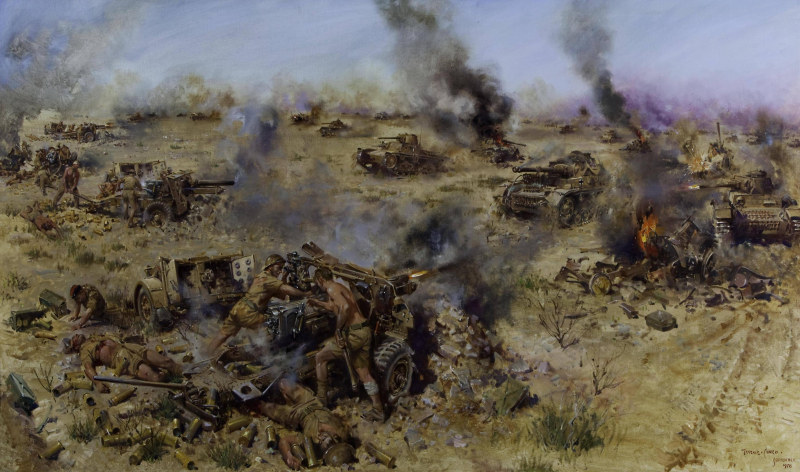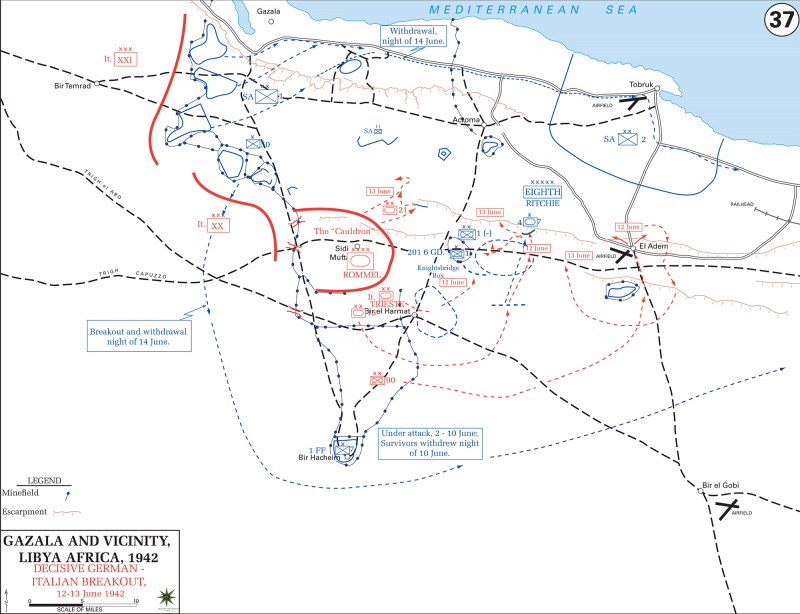Battle Of Gazala
During the Second World War's North African campaign, an extremely fortified Allied position had grown west of Tobruk, a port city in Libya. This posture is known as the Gazala line. Its main goal was to maintain control of the city, which German and Italian forces had besieged early in the conflict. By May 1942, the British Eighth Army—a group specifically equipped for fighting and reconnaissance in the desert—had manned and defended the line nearly entirely, even though that wouldn't have been enough to stop the Axis war machine. Well, initially, at least.
Italian and German forces under the command of Erwin Rommel, popularly known as the Desert Fox for his accomplishments in this theater, launched a fierce attack on the 50-mile-long line on May 26. Even conservative estimates place the British formation, which included troops from its colonies and the Free French Republic, at close to 175,000, more than twice the size of Rommel's army.
The Eighth Army was eventually unable to sustain its supply lines, unlike Rommel, who was constantly supplied by the Italian command centers in Libya and across the Mediterranean, despite the defenders' tenacious resistance. The remaining Allied forces were encircled and forced to flee across the Egyptian border after Tobruk fell on June 21. During this combat, more than 50,000 men died and approximately 35,000 were captured, as opposed to about 3,300 soldiers lost by Germany and Italy.
Date: 26 May – 21 June 1942(3 weeks and 5 days)
Location: Gazala, near Tobruk, Libya
Result: German–Italian victory












